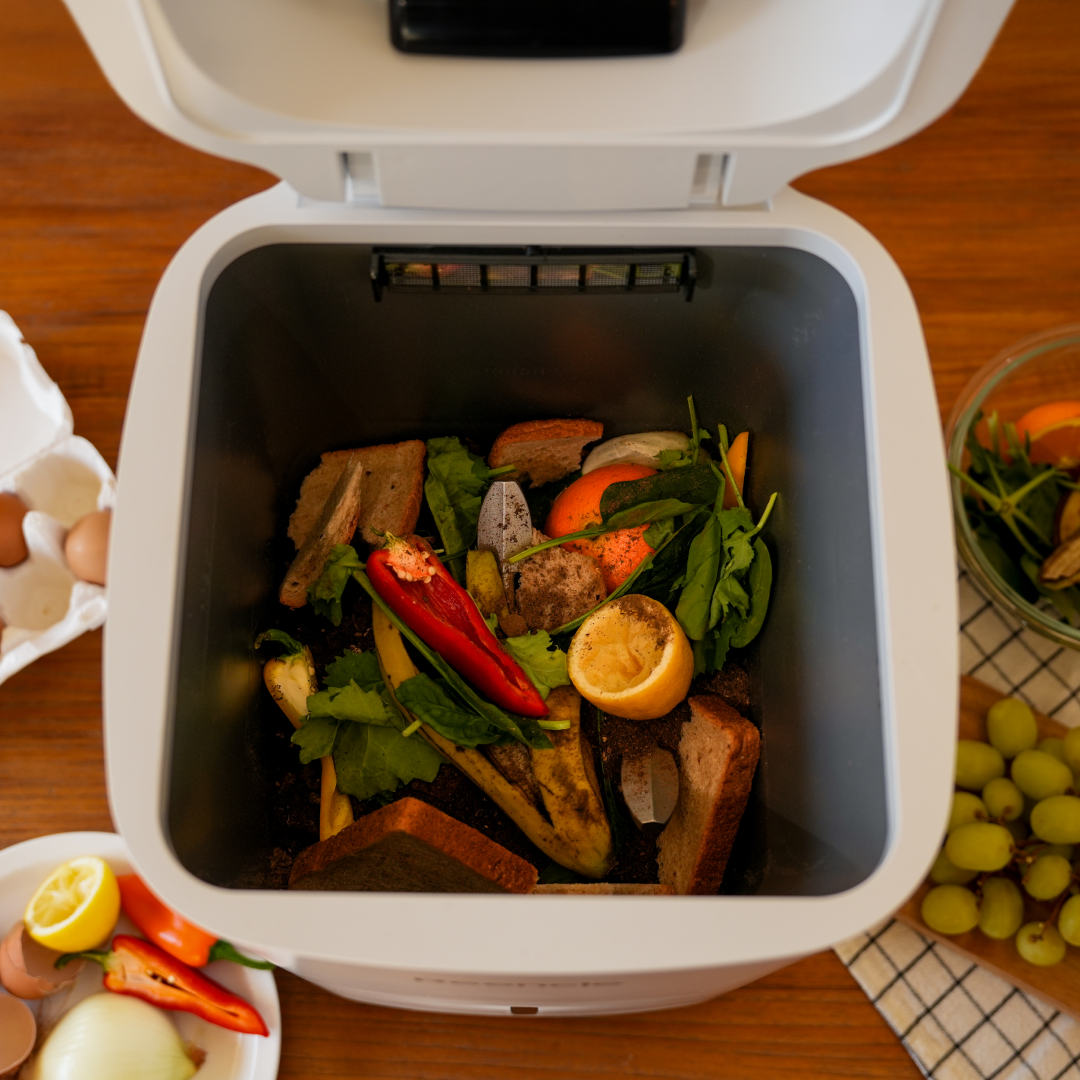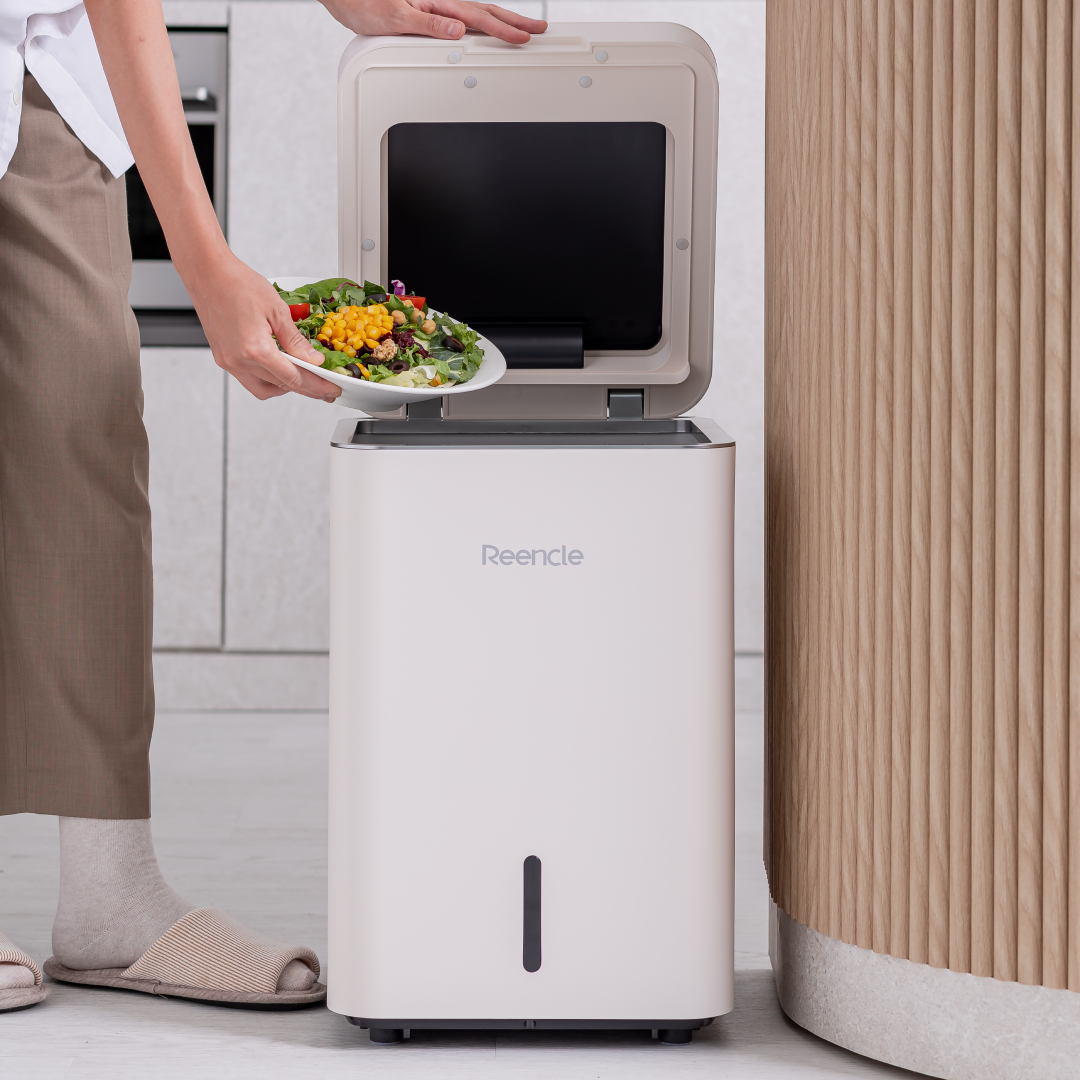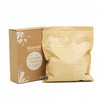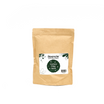

Here’s what you get with a MegaReencle program:

1.
A proven technology that decomposes 90% of food waste in 24hrs that can accept almost all food waste and compostable items*

2.
Real cost savings by reducing or eliminating disposal and transportation costs, water and electricity costs of outdated technologies, regulatory penalties, and the environmental impacts of waste water pollution, GHG emissions and degraded soil.

3.
Easy to install and versatile depending on the location
The Simplest,
Most Cost Effective
Aerobic Composter
Real Money Savings means
Cutting Costs for Food Waste Disposal
Cutting Environmental Damage

Fast Decomposition
Decomposes 90% of food waste in 24hrs, handling most food and compostable items.

Cost &
Environmental Savings
Cuts disposal, transport, water/electricity costs while reducing pollution and emissions.

Easy Installation
Simple to set up, adaptable to different locations.
Here’s what you get with
a MegaReencle program:

Fast Decomposition
Decomposes 90% of food waste in 24hrs,
handling most food and compostable items.

Cost & Environmental Savings
Cuts disposal, transport, water/electricity costs
while reducing pollution and emissions.

Easy Installation
Simple to set up, adaptable to different locations.
Find the Right MegaReencle for You!
Small Model

RSV2B
💡 Small offices & Cafes
Medium Model

RSV2C
💡 For Restaurants & Schools
Large Model

RSV2D
💡 For Factory / Industrial Facility
| Model | RSV2B (66lbs) | RSV2C (110lbs) | RSV2D (220lbs) |
|---|---|---|---|
| Product Dimension | 1,300(W) x 826(D) x 1,047(H)mm | 1,796(W) x 826(D) x 1,047(H)mm | 2,080(W) x 1,100(D) x 1,252(H)mm |
| Daily Composting Capacity | up to 66lbs/day | up to 110lbs/day | up to 220lbs/day |
| Rated Voltage | 220V / 60Hz | 220V / 60Hz | 220V / 60Hz |
| Power consumption | 0.6kwh / hour | 0.8kwh / hour | 1.4-1.8 kwh / hour |


Complete Food Waste Circularity
Food Waste Generated
Onsite organic waste
Megareencle Processing
24-hour decomposition
Premium
Compost
Ready for
soil application
Soil Health Restored
Complete circularity
Universal Studios, Amazon, Air Force, and leading universities choose Megareencle because they need their compost for onsite use - not disposal.
Why Other Solutions
Compromise Soil Health

Why Other Solutions Compromise Soil Health

Megareencle
Composting

✅ Creates real compost onsite
✅ Zero transportation needed
✅ Eliminates all emissions
✅ Regenerates soil health
✅ Complete circularity achieved
Landfill
(Status Quo)

❌ Massive methane emissions
❌ Transportation costs & emissions
❌ No soil benefit whatsoever
❌ Rising disposal fees
❌ Regulatory compliance risks
Organic Pickup

❌ Multiple transportation trips
❌ External processing emissions
❌ No control over compost quality
❌ High ongoing costs
❌ No circularity benefit
Pulpers & Dehydrators

❌ Only change form, not structure
❌ High water usage & pollution
❌ Frequent blade breakdowns
❌ High contamination risk
❌ Still requires disposal
Anaerobic Digestors

❌ Produces only pulp waste
❌ Complex maintenance
❌ Methane leakage risks
❌ High capital & operating costs
❌ Limited soil health benefit
MEGAREENCLE
Getting Started:
STEP 1
Choosing the Model
that Fits Your Needs
Start with food waste Audit and find out which models fits your business
STEP 2
Preparing and Installing Megareencle:
- (Preparing) Ensure proper The composter will be delivered in a wood crate packaging
- (Installing) The composter will be delivered in a wood crate packaging
- Once crate is removed, the composter can roll easily into position.
- Depending on the location, a forklift or pallet jack might be needed to truck or lift it onto an elevated location.
STEP 3
Operating Procedures and Employee Training:
- Based on the Food Waste Audit, determine what changes will be needed to your existing process and collection methods
- Define the new SOP and determine who will be the point of contact for ensuring the composter's cleaning and maintenance.
- Establish a schedule for emptying the composter (for example, many locations feed the unit Mon-Fri, let it process fully Sat-Sun, then empty the excess Monday morning before starting to input more food).
- Conduct training and post signage around the composter as a reference for employees and staff who will be using the composter.
FAQ
Getting Started:
Determining the Best Location for Installation:
*Generally, venting is not required in most locations, but is recommended if there is a potential that odors will be disruptive. In most cases, the composter’s activated carbon filters and keeping the compost balanced will eliminate odors, but there is the chance of variability due to operator error and inputs (e.g. rotten food).
Preparing for and Installing the Composter:
● The composter will be delivered in a wood crate that will need to be removed. ● Depending on the location, a forklift or pallet jack might be needed to remove it from the truck or lift it onto an elevated location. ● Once removed, the composter can roll easily into position. ● If needed, ensure the proper electric outlet has been installed before installation.Operating Procedures and Employee Training:
● Based on the Food Waste Audit, determine what changes will be needed to your existing process and collection methods(e.g. will new bins be required?). ● Define the new SOP and determine who will be the point of contact for ensuring the composter's cleaning and maintenance. ● Establish a schedule for emptying the composter
(for example, many locations feed the unit Mon-Fri, let it process fully Sat-Sun, then empty the excess Monday morning before starting to input more food). ● Conduct training and post signage around the composter as a reference for employees and staff who will be using the composter.
What to Do with the Compost*?
● What you do with the compost will depend on your location and local infrastructure. ● In a best case scenario, you can use the compost onsite for landscaping and gardening, or provide it to employees or local organizations that need the compost. ● In a worst case scenario, you can dispose of it in landfill, but because the food waste is almost completely decomposed, you remove most of the risk of methane emissions and reduce the carbon impact of transportation since the volume of the food waste has been decreased by 70-90%.*Compost - the stability and readiness of the compost depends on the material inputs and time spent processing in the machine. In most cases, a short time curing is required to stabilize the compost before using for planting.











